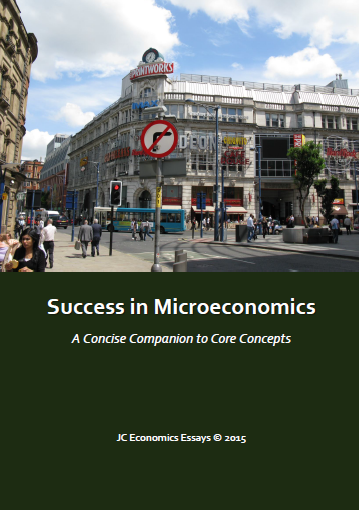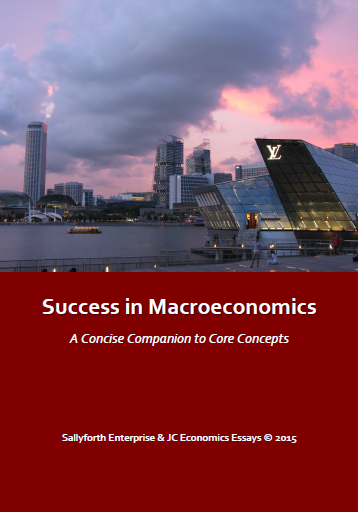(b) How far would the knowledge of demand elasticities (PED, YED, XED) be useful to a government in devising policies that discourage the use of private cars? [15]
To discourage the use of private cars, there are a few policies that the government can implement. The government can implement policies to curb car ownership, curb car usage, or encourage the use of public transport. This paper argues that the knowledge of demand elasticities is useful to help governments in terms of car ownership, car usage, and public transport strategies, and to a large extent this knowledge is quite useful for helping the government make good decisions to tackle road congestion.
Firstly, car ownership can be reduced through a variety of measures. Car ownership can be discouraged by taxing the purchases of new cars, thus making them more expensive, thereby reducing the quantity demanded. Taxes shift the supply curve of cars to the left, thus reducing the equilibrium quantity demanded. Alternatively, an equivalent policy is to set a quota below the free market equilibrium quantity. A quota is a mandatory number of cars that limits the car population. By controlling car ownership, the population growth of cars is curbed and with a smaller car population, there will indirectly be fewer cars on the road.
Alternatively, car usage can be controlled directly using road pricing whereby motorists are charged for using congested roads. For example, in Singapore we have ERP. Electronic Road Pricing is a road toll system that reduces the usage of cars. This reduces the number of cars on that road, hence lowering the extent of traffic congestion.
Finally, lowering the fares or improving the quality and accessibility of public transport, for instance, lowering the fares of SMRT trains or raising the quality of SBS buses, encourages people to switch away from driving private cars to using public transport, hence reducing the usage of cars and traffic congestion in the process.
The knowledge of PED, YED, and XED are quite useful in helping governments devise policies to discourage the use of private cars. PED can be applied here. If demand is price elastic, a low tax rate is able to significantly reduce the quantity demanded. Hence an indirect tax is a suitable policy to curb car usage or ownership. However, if the demand is price inelastic, a very high tax rate is required to significantly reduce the quantity demanded. Hence indirect taxes are likely to be politically unpopular because the imposition of a very high tax rate can result in the government being perceived as being more interested in raising revenue rather than in curbing car usage. Hence a quota is probably politically more acceptable because the government is perceived to be controlling the quantity directly rather than trying to raise revenue. However if the government were to auction off the quota permits, they might again be accused of trying to raise revenue rather than fight traffic congestion.
YED can also be applied here. Knowing the income elasticity of demand enables the government to estimate the extent of the change in demand in response to a change in income. So as income rises with economic growth, the government is then be able to better determine how much car taxes should be raised so as to prevent car population and usage from rising. If the demand for cars is income elastic (i.e. normal luxury), car ownership and usage taxes have to be raised frequently and/or substantially as the country experiences economic growth. Again, the government might be seen as being more interested in raising revenue than in curbing traffic congestion so indirect taxes are likely to be politically unpopular while a quota is likely to be politically more acceptable.
Cross elasticity of demand (XED) measures responsiveness of the demand for a good to a change in the price of another good. It is calculated by taking the percentage change in the demand for the good over the percentage change in the price of the other good. XED can be applied here as well. Since public transport are substitutes to private cars, knowing the cross elasticity of demand for cars with respect to the price of a public transport enables the government to know whether cutting public transport fares is an effective way of curbing car usage. Alternatively, by improving the quality and accessibility of public transport, this makes it a closer substitute to private cars, hence raising the cross elasticity of demand between the two goods. Hence, for a given reduction in the price of public transport, there is a greater impact in curbing the demand for car usage.
In conclusion, knowing the various demand elasticities is to a certain extent quite useful in helping a government decide on which policy to choose. However, it is probably less useful in helping the government decide how much to tax or what fares to charge for public transport. This is because elasticity figures are estimated based on pass data, so they are not fully applicable to the current context as economic conditions tend to change over time. Hence, all elasticity figures should be considered carefully.
JC Economics Essays - Tutor's Commentary: This essay paper was written under exam conditions, and is still well structured, much like the companion complementary part (a). However, as usual, the usual questions apply: how can I make this essay better? How can I use an economics diagram to make this paper better? It has a good structure and is well crafted, yes. May I use this approach in my other Economics essays, or is this only applicable to this type of questions or only to elasticities? A quick word of advice here: please do not swot/ mug/ memorise Economics essays - try to understand the underlying structure, pattern, and system of writing, and always think to yourself - how can I make this essay better and more structured? Why do I prioritise the points this way? Why do I write like this? And how can I be better than I am already? Think hard and you will succeed.



